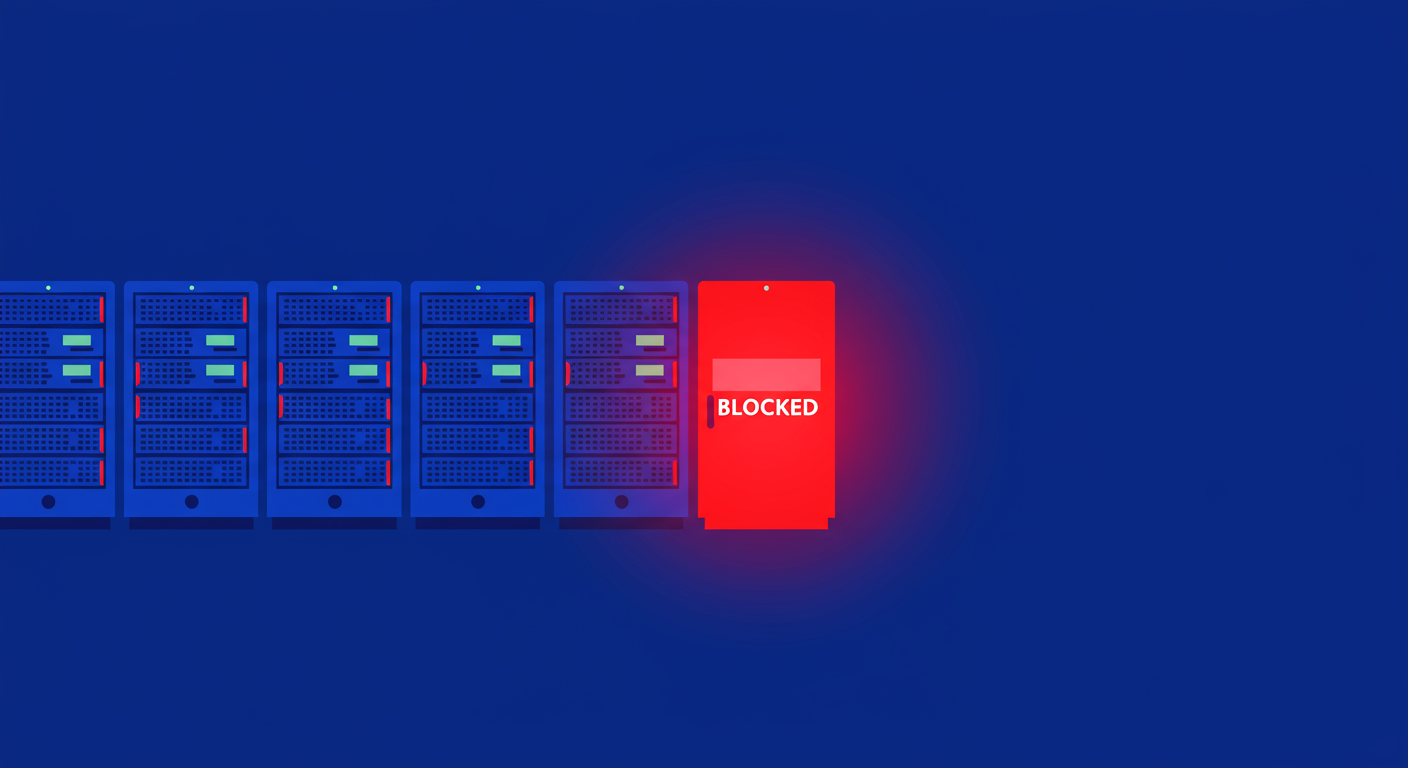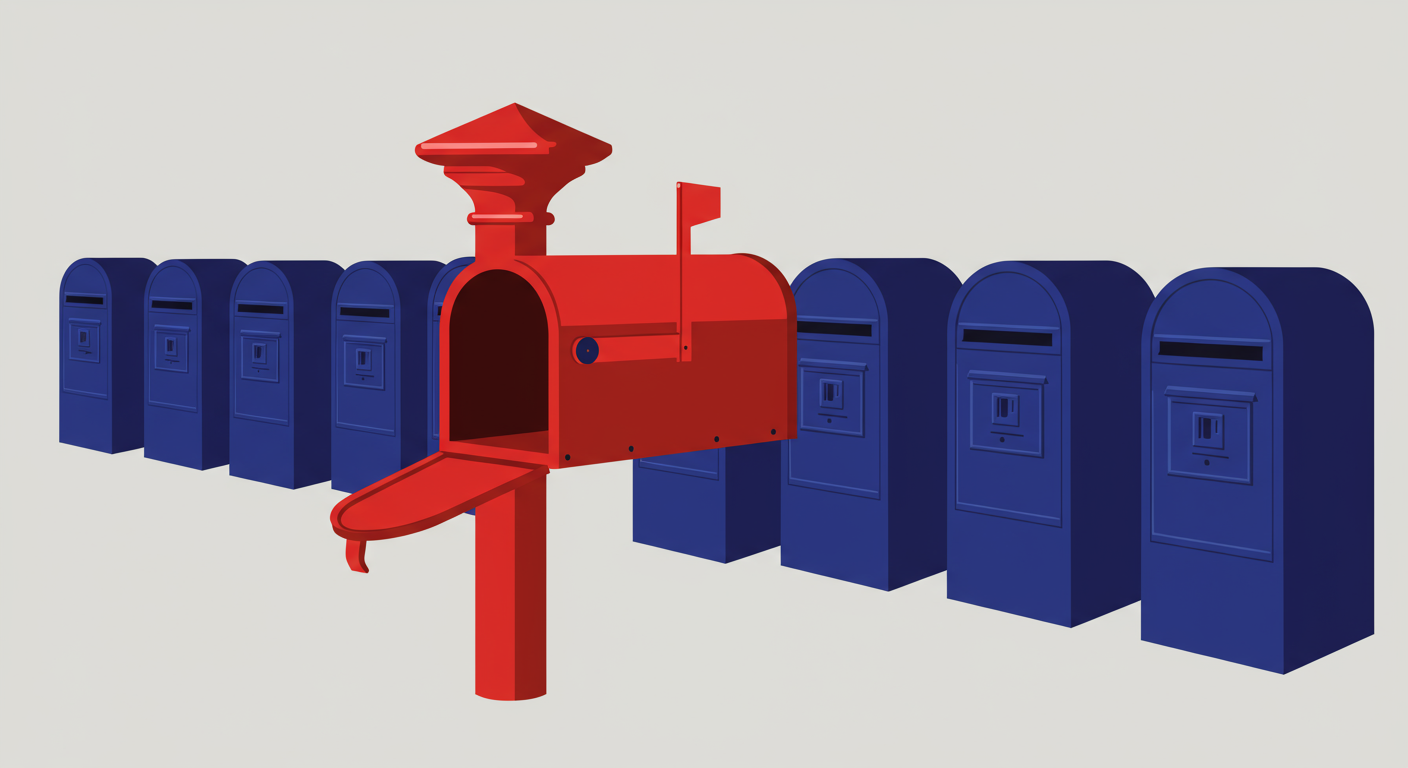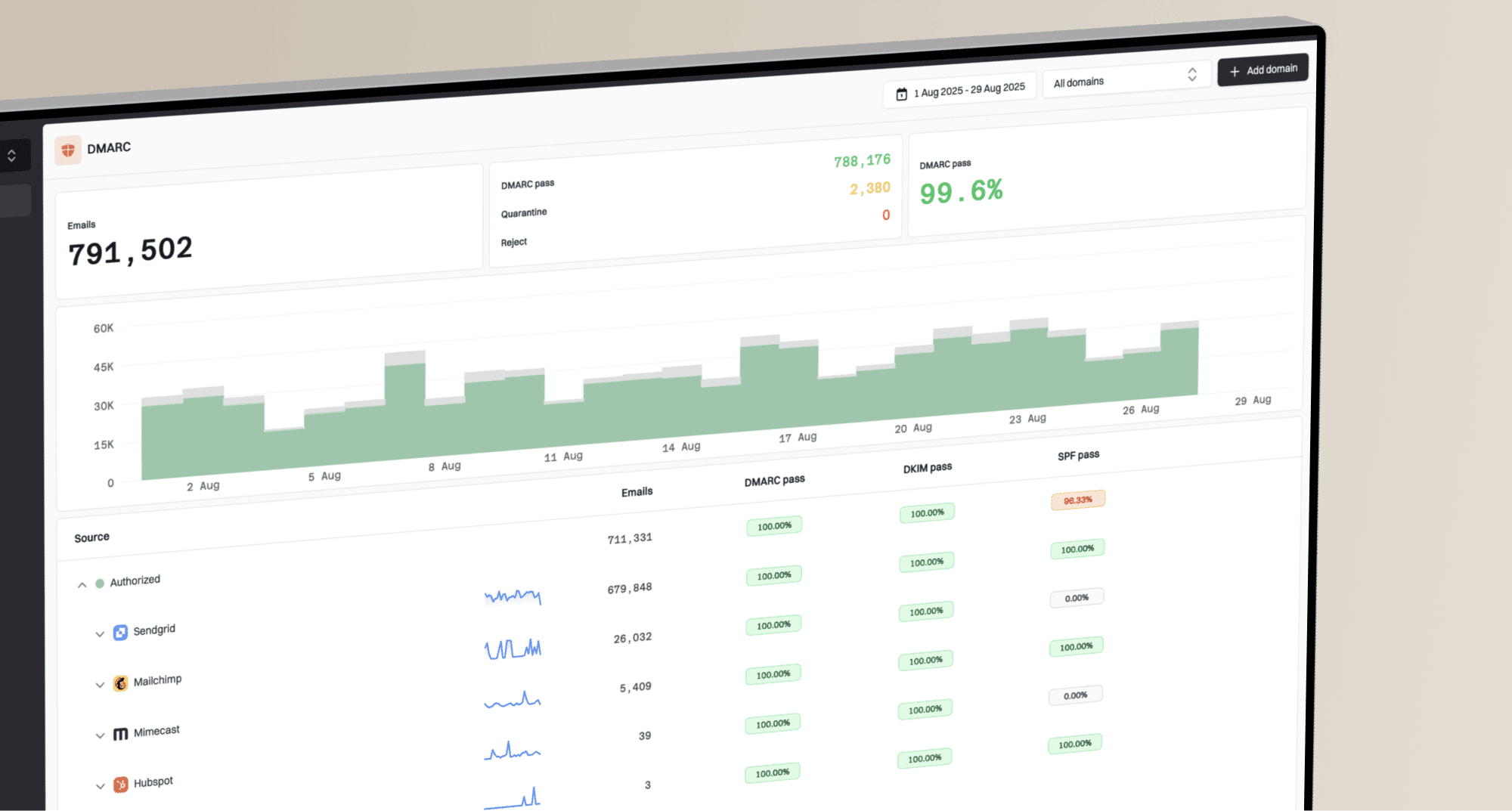A guide to RBLs (real-time blackhole lists)



Every day, countless emails are sent, and a huge portion of them are unwanted spam. For anyone relying on email for business, cutting through this noise to reach the inbox is a constant battle. This is where the internet has developed a sort of immune system to protect itself and its users from the deluge of junk mail.
A core component of this defense system is the RBL, which stands for Real-time Blackhole List. You might also hear it called a DNSBL (Domain Name System-based Blackhole List), a blacklist, or a blocklist. These terms are often used interchangeably, but they all refer to the same fundamental concept: a publicly accessible, dynamically updated database of IP addresses or domains that are known or suspected sources of spam.
Think of it as a neighborhood watch for the internet. When a server is identified for engaging in shady email practices, it gets put on one of these lists. Mail servers around the world can then consult these lists to decide whether to accept, reject, or quarantine an incoming email. It's a real-time system designed to stop spam at the virtual front door.

So, how does this all work in practice? When someone sends you an email, their mail server connects to your mail server. Before your server accepts the email, it can perform a quick check. It takes the sender's IP address and queries one or more RBL databases. This process is incredibly fast, happening in real-time through the Domain Name System (DNS), the same system that translates domain names into IP addresses.
The technical part of the query is clever. The receiving server reverses the sender's IP address and adds the RBL's domain name to the end. For example, if the sender's IP is `1.2.3.4` and the RBL is `example-rbl.com`, the server performs a DNS lookup for `4.3.2.1.example-rbl.com`. If a record is returned for that lookup, it's a positive match—the IP is on the list. If not, it's considered clear.
A positive match doesn't automatically mean your email is doomed, but it's a significant red flag. The administrator of the receiving mail server decides what to do. They might configure their system to reject the email entirely, sending back a bounce message. Alternatively, they might accept the email but deliver it straight to the spam folder, or simply add a "spam score" to it, increasing the likelihood that other filters will catch it. The key thing to understand is that the RBL provides the data; the mail server makes the decision.
It's also important to know that there isn't just one master RBL. There are hundreds of different blocklists, each operated by different organizations with their own listing criteria. Some, like Spamhaus, are highly respected and widely used. Others might be more obscure or aggressive. Being listed on a major blacklist can have a severe impact on your email deliverability, while a listing on a smaller one might have a negligible effect.
Landing on a blacklist (or blocklist) is something every email marketer dreads, but it's often the result of preventable issues. It's rarely a random event. RBL operators are looking for specific signals that indicate poor sending practices or malicious activity. Understanding these triggers is the first step toward avoiding them.
The most obvious reason is, of course, sending unsolicited bulk email, or spam. However, even legitimate senders can get listed for practices that, to an automated system, look like spam. A sudden, massive increase in email volume from a new or previously dormant IP address can look suspicious to mailbox providers. This is why a proper IP warming process is so critical.
Beyond volume, high complaint rates—where many recipients mark your emails as spam—are a huge red flag. Similarly, sending to many invalid email addresses (a high bounce rate) suggests your email list is old or poorly maintained. One of the most common ways legitimate senders get into trouble is by hitting a spam trap. These are email addresses, often old and abandoned, that have been repurposed by anti-spam organizations, and sending to one is a sure way to get listed.

There are several technical and practical reasons you might find yourself on a remote block list. Here are some of the most frequent culprits:
If you suddenly notice your emails aren't being delivered and bounce rates are spiking, a blocklist listing is a likely cause. The first clue is often in the bounce message itself. Many mail servers will include the name of the RBL that caused the rejection and a link with more information. This is your starting point for investigation.
However, you don't want to wait for delivery to fail before you find out there's a problem. Proactive monitoring is key. You can use a tool to check your domain and IP addresses against a wide range of common RBLs. This gives you a comprehensive view of your reputation and allows you to catch problems before they have a major impact on your campaigns.
 Spamhaus
Spamhaus 0Spam
0Spam Cisco
Cisco NoSolicitado
NoSolicitado URIBL
URIBL abuse.ro
abuse.ro ALPHANET
ALPHANET Anonmails
Anonmails Ascams
Ascams BLOCKEDSERVERS
BLOCKEDSERVERS Calivent Networks
Calivent Networks EFnet
EFnet
 JustSpam
JustSpam Kempt.net
Kempt.net
 NordSpam
NordSpam RV-SOFT Technology
RV-SOFT Technology
 Scientific Spam
Scientific Spam Spamikaze
Spamikaze SpamRATS
SpamRATS SPFBL
SPFBL Suomispam
Suomispam System 5 Hosting
System 5 Hosting Team Cymru
Team Cymru Validity
Validity www.blocklist.de Fail2Ban-Reporting Service
www.blocklist.de Fail2Ban-Reporting Service ZapBL
ZapBL 2stepback.dk
2stepback.dk Fayntic Services
Fayntic Services ORB UK
ORB UK technoirc.org
technoirc.org TechTheft
TechTheft Spamhaus
Spamhaus 0Spam
0Spam Cisco
Cisco NoSolicitado
NoSolicitado URIBL
URIBL abuse.ro
abuse.ro ALPHANET
ALPHANET Anonmails
Anonmails Ascams
Ascams BLOCKEDSERVERS
BLOCKEDSERVERS Calivent Networks
Calivent Networks EFnet
EFnet
 JustSpam
JustSpam Kempt.net
Kempt.net
 NordSpam
NordSpam RV-SOFT Technology
RV-SOFT Technology
 Scientific Spam
Scientific Spam Spamikaze
Spamikaze SpamRATS
SpamRATS SPFBL
SPFBL Suomispam
Suomispam System 5 Hosting
System 5 Hosting Team Cymru
Team Cymru Validity
Validity www.blocklist.de Fail2Ban-Reporting Service
www.blocklist.de Fail2Ban-Reporting Service ZapBL
ZapBL 2stepback.dk
2stepback.dk Fayntic Services
Fayntic Services ORB UK
ORB UK technoirc.org
technoirc.org TechTheft
TechTheft Spamhaus
Spamhaus 0Spam
0Spam Cisco
Cisco NoSolicitado
NoSolicitado URIBL
URIBL abuse.ro
abuse.ro ALPHANET
ALPHANET Anonmails
Anonmails Ascams
Ascams BLOCKEDSERVERS
BLOCKEDSERVERS Calivent Networks
Calivent Networks EFnet
EFnet
 JustSpam
JustSpam Kempt.net
Kempt.net
 NordSpam
NordSpam RV-SOFT Technology
RV-SOFT Technology
 Scientific Spam
Scientific Spam Spamikaze
Spamikaze SpamRATS
SpamRATS SPFBL
SPFBL Suomispam
Suomispam System 5 Hosting
System 5 Hosting Team Cymru
Team Cymru Validity
Validity www.blocklist.de Fail2Ban-Reporting Service
www.blocklist.de Fail2Ban-Reporting Service ZapBL
ZapBL 2stepback.dk
2stepback.dk Fayntic Services
Fayntic Services ORB UK
ORB UK technoirc.org
technoirc.org TechTheft
TechTheft Spamhaus
Spamhaus 0Spam
0Spam Cisco
Cisco NoSolicitado
NoSolicitado URIBL
URIBL abuse.ro
abuse.ro ALPHANET
ALPHANET Anonmails
Anonmails Ascams
Ascams BLOCKEDSERVERS
BLOCKEDSERVERS Calivent Networks
Calivent Networks EFnet
EFnet
 JustSpam
JustSpam Kempt.net
Kempt.net
 NordSpam
NordSpam RV-SOFT Technology
RV-SOFT Technology
 Scientific Spam
Scientific Spam Spamikaze
Spamikaze SpamRATS
SpamRATS SPFBL
SPFBL Suomispam
Suomispam System 5 Hosting
System 5 Hosting Team Cymru
Team Cymru Validity
Validity www.blocklist.de Fail2Ban-Reporting Service
www.blocklist.de Fail2Ban-Reporting Service ZapBL
ZapBL 2stepback.dk
2stepback.dk Fayntic Services
Fayntic Services ORB UK
ORB UK technoirc.org
technoirc.org TechTheft
TechTheft Spamhaus
Spamhaus 0Spam
0Spam Cisco
Cisco NoSolicitado
NoSolicitado URIBL
URIBL abuse.ro
abuse.ro ALPHANET
ALPHANET Anonmails
Anonmails Ascams
Ascams BLOCKEDSERVERS
BLOCKEDSERVERS Calivent Networks
Calivent Networks EFnet
EFnet
 JustSpam
JustSpam Kempt.net
Kempt.net
 NordSpam
NordSpam RV-SOFT Technology
RV-SOFT Technology
 Scientific Spam
Scientific Spam Spamikaze
Spamikaze SpamRATS
SpamRATS SPFBL
SPFBL Suomispam
Suomispam System 5 Hosting
System 5 Hosting Team Cymru
Team Cymru Validity
Validity www.blocklist.de Fail2Ban-Reporting Service
www.blocklist.de Fail2Ban-Reporting Service ZapBL
ZapBL 2stepback.dk
2stepback.dk Fayntic Services
Fayntic Services ORB UK
ORB UK technoirc.org
technoirc.org TechTheft
TechTheftOnce you've identified which blocklist you're on, the next step is delisting. Each RBL has its own procedure for removal, which you can usually find on their website. Some have self-service removal tools where you can request to be taken off the list after a certain time has passed. More reputable blacklists, like Spamhaus, will require you to prove that you have identified and fixed the root cause of the problem before they will consider delisting you.
This brings me to the most critical point: you must fix the underlying issue. Simply getting delisted without addressing why you were listed in the first place is a temporary fix at best. If you were listed for sending to a bad list, clean your list. If your server was compromised, secure it. If you don't fix the problem, you will inevitably be re-listed, and getting removed a second time is often much more difficult.
Navigating the world of email deliverability can feel complex, but understanding concepts like the Real-time Blackhole List is fundamental. These blocklists are not just arbitrary gatekeepers; they are an essential part of the internet's infrastructure, working to keep email a useful and relatively safe communication tool for everyone. For senders, they serve as a powerful feedback mechanism, highlighting issues that need to be addressed. Staying off these lists comes down to responsible sending practices: maintaining clean email lists, respecting user consent, securing your systems, and monitoring your reputation. By treating your email program with the seriousness it deserves, you can ensure your messages consistently reach the inbox and avoid the deliverability nightmare of a blacklist appearance.












